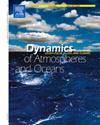Characteristics and potential drivers of extreme high-temperature event frequency in Eurasia
IF 2
4区 地球科学
Q2 GEOCHEMISTRY & GEOPHYSICS
引用次数: 0
Abstract
This study investigates decadal variations in the frequency and intensity of extreme high temperature events (EHEs) during the summer months of July and August across the Northern Hemisphere from 1979 to 2023. Research results indicate that the frequency and intensity of EHEs on the Eurasian continent have increased more rapidly than in other Northern Hemisphere landmasses over time. By applying Empirical Orthogonal Function analysis, two dominant modes of EHEs were identified: a spatial consistency pattern and a quadrupole anomaly pattern. The spatial consistency pattern shows significant anomalies centered around the Caspian Sea and East Asia, with a notable upward trend in intensity. This pattern is strongly associated with atmospheric warming and increased sea surface temperatures in the tropical North Atlantic, which amplifies the North Atlantic-Eurasian wave train. The eastward propagation of wave activity flux, driven by the shifting positive geopotential height anomaly, further enhances the frequency and intensity of EHEs. The quadrupole anomaly pattern is characterized by four centers located in the mid-latitude region (30°N-50°N, 25°E-150°E), West Asia-South Asia-Southeast Asia, Central Europe-Northern Europe, and East Asia-Eastern West Asia. The EHEs in these regions exhibit anti-phase characteristics, meaning that while one region experiences higher-than-average frequency of EHEs, others simultaneously show lower-than-average frequency of EHEs. The formation of this quadrupole anomaly pattern is closely associated with the negative phase of the North Atlantic Oscillation (NAO). NAO influences regional temperatures by modulating the jet stream and geopotential height, forming anticyclones or cyclones that, in turn, increase or decrease EHEs. Under NAO influence, a double jet state is formed, and a blocking anticyclone emerges in the weak wind zone between the two zonal wind maxima, thus increasing the EHEs in local areas. This study underscores the importance of understanding these distinct patterns and their underlying mechanisms to better predict and manage the regional impacts of extreme heat in a changing climate.
欧亚大陆极端高温事件频率特征及其潜在驱动因素
本文研究了1979 - 2023年北半球夏季7月和8月极端高温事件发生频率和强度的年代际变化。研究结果表明,随着时间的推移,欧亚大陆EHEs的频率和强度比北半球其他大陆增加得更快。通过经验正交函数分析,确定了EHEs的两种主要模式:空间一致性模式和四极异常模式。空间一致性表现为以里海和东亚为中心的显著异常,强度呈显著上升趋势。这种模式与大气变暖和热带北大西洋海面温度升高密切相关,这放大了北大西洋-欧亚波列。在正位势高度异常移动的驱动下,波活度通量向东传播,进一步增强了高喷发的频率和强度。四极异常分布在中纬度地区(30°N-50°N, 25°E-150°E)、西亚-南亚-东南亚、中欧-北欧、东亚-东亚-西亚等4个中心。这些区域的ehe表现出反相位特征,即当一个区域的ehe频率高于平均水平时,其他区域的ehe频率同时低于平均水平。这种四极异常模式的形成与北大西洋涛动(NAO)负相密切相关。NAO通过调节急流和位势高度,形成反气旋或气旋,进而增加或减少ehs,从而影响区域温度。在NAO的影响下,形成双喷流状态,在两个纬向风极大值之间的弱风区出现阻塞型反气旋,从而增加了局部地区的EHEs。这项研究强调了了解这些不同模式及其潜在机制的重要性,以便更好地预测和管理气候变化中极端高温的区域影响。
本文章由计算机程序翻译,如有差异,请以英文原文为准。
求助全文
约1分钟内获得全文
求助全文
来源期刊

Dynamics of Atmospheres and Oceans
地学-地球化学与地球物理
CiteScore
3.10
自引率
5.90%
发文量
43
审稿时长
>12 weeks
期刊介绍:
Dynamics of Atmospheres and Oceans is an international journal for research related to the dynamical and physical processes governing atmospheres, oceans and climate.
Authors are invited to submit articles, short contributions or scholarly reviews in the following areas:
•Dynamic meteorology
•Physical oceanography
•Geophysical fluid dynamics
•Climate variability and climate change
•Atmosphere-ocean-biosphere-cryosphere interactions
•Prediction and predictability
•Scale interactions
Papers of theoretical, computational, experimental and observational investigations are invited, particularly those that explore the fundamental nature - or bring together the interdisciplinary and multidisciplinary aspects - of dynamical and physical processes at all scales. Papers that explore air-sea interactions and the coupling between atmospheres, oceans, and other components of the climate system are particularly welcome.
 求助内容:
求助内容: 应助结果提醒方式:
应助结果提醒方式:


